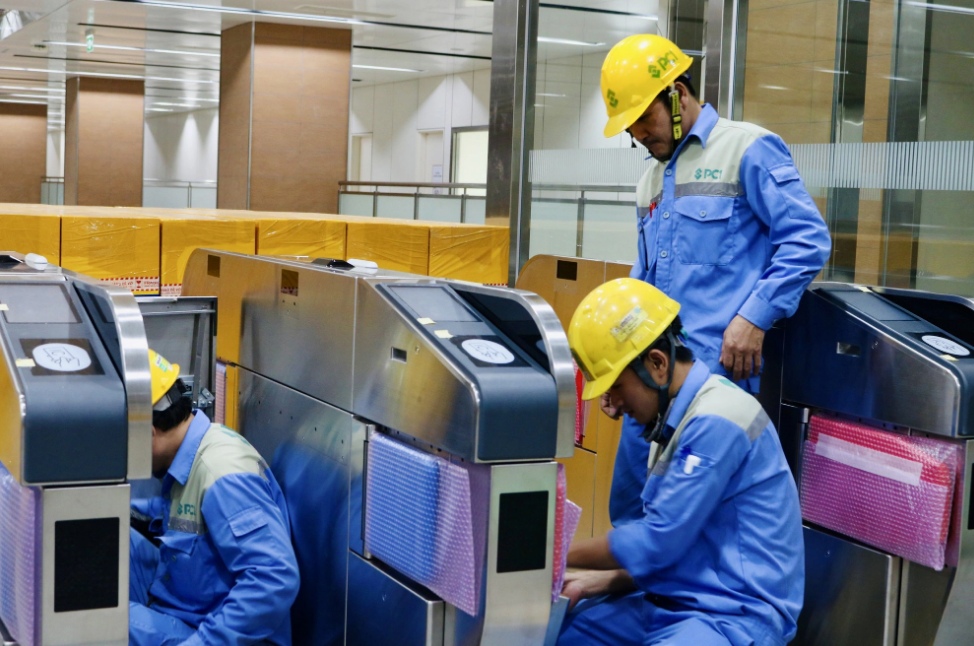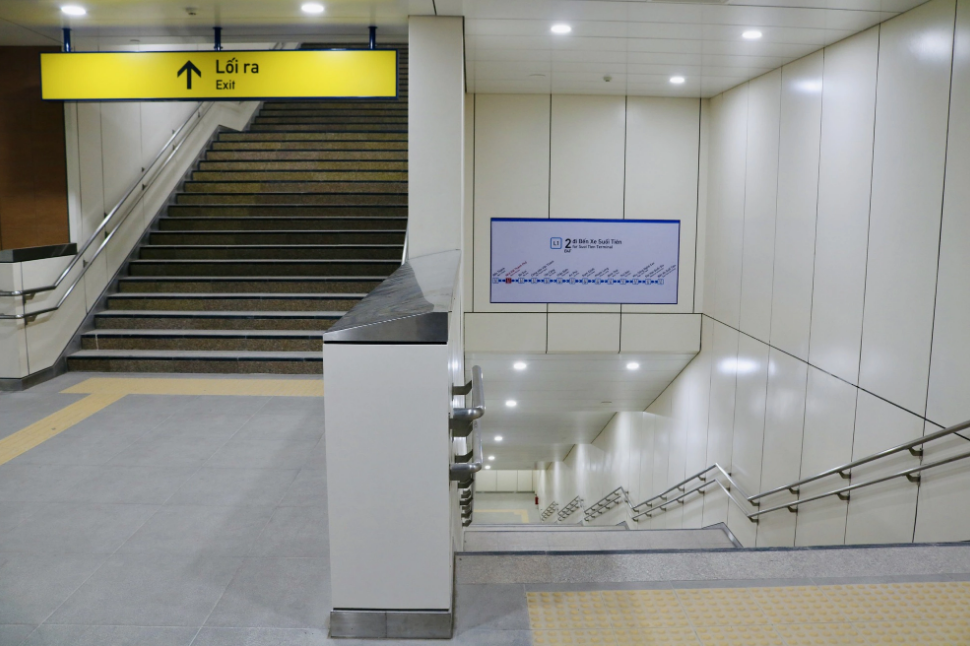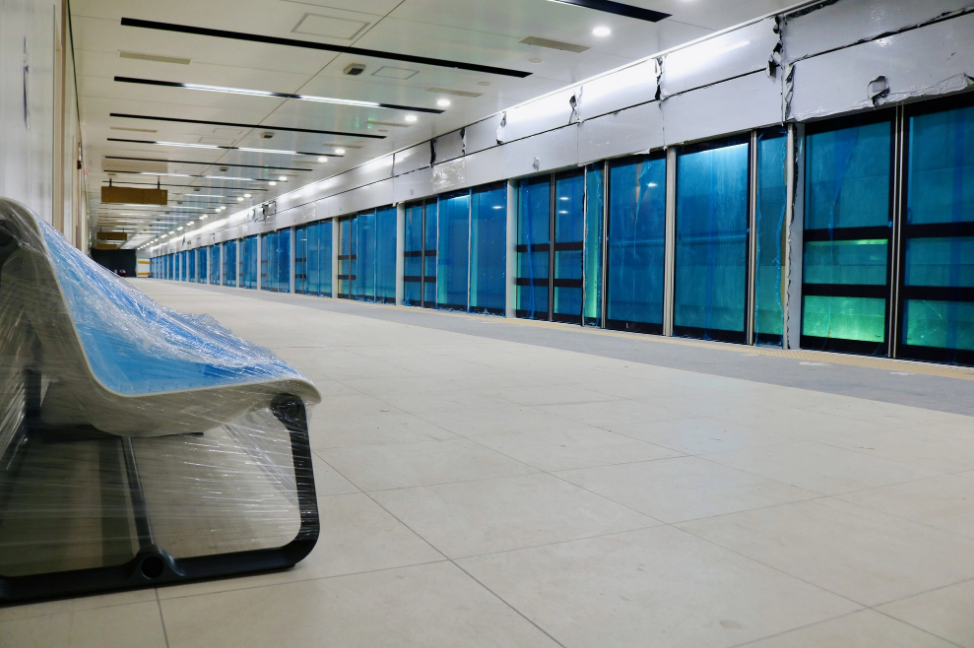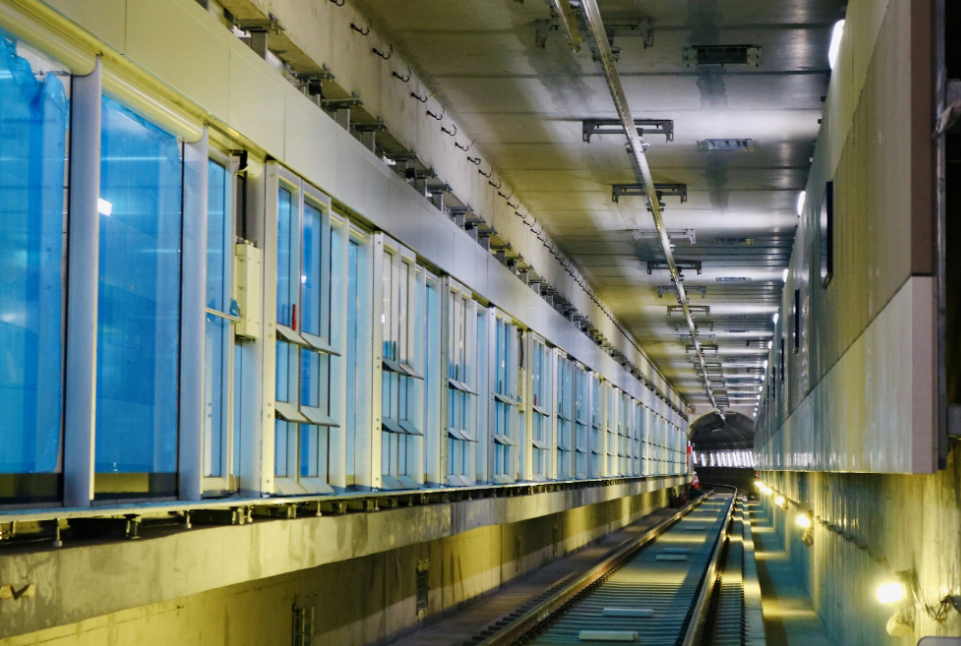The underground Opera House station is the second among 14 stations of the first metro line to reach completion.
The metro station is 190 meters long, and 26 meters wide, and features four basements.
Its first basement encompasses such facilities as a waiting lounge, ticket machines, a restroom, and automated fee collection gates, while the second and fourth basements function as platforms where passengers can board trains.
The third floor houses equipment for employees at the station, a safety control system, a rest area, and rooms containing electric tools and devices.
The Opera House station was designed to have five exits to Lam Son Park, Union Square Tower, and Pasteur Street.
The 19.7-kilometer-long metro line, which carries a price tag of VND43.7 trillion (US$1.8 billion), has 17 trains, each consisting of three cars and designed to run at up to 110 kilometers per hour above the ground and 80 kilometers per hour underground.
Each Japanese-manufactured train is 61.5 meters long and can carry 930 passengers, including 147 seated and 783 standing guests.
The first metro link in the southern metropolis embarked on a test run over the entire route for the first time in late August.
 |
| Engineers inspect the ticket checking system at the underground Opera House metro station of the first metro line in Ho Chi Minh City. Photo: MAUR |
 |
| Staircases at the underground Opera House station of Ho Chi Minh City’s first metro line are ready to serve passengers. Photo: MAUR |
 |
| A line of chairs covered with plastic sheets to keep them clean before being put into use. Photo: MAUR |
 |
| A track at the underground Opera House station. Photo: MAUR |









